A SCOBY is a jelly-like symbiotic culture of bacteria and yeast that is necessary to brew your own kombucha at home. Let me show you how to make a scoby from scratch with just a few simple steps and ingredients. So that then you can ferment your own homemade kombucha.

This is the first post in my Kombucha series. Find the other posts HERE:
>> How to Brew Kombucha at Home
>> How to Flavor Kombucha with Second Fermentation
Kombucha, a fermented tea beverage with a long history, has steadily increased in popularity globally over the past few decades. While many store bought varieties are on the market, these can be expensive. Luckily, once you learn to brew kombucha tea, you can have a fresh batch of kombucha on a regular basis for a more affordable price. The first step of making kombucha tea is growing a SCOBY, a crucial ingredient for kombucha brewing.
What is a Scoby?
The term "SCOBY" isn't just a word, it is also an acronym for a symbiotic culture of bacteria and yeast. Basically, a SCOBY comprises yeast and bacteria that join together via cellulose nanofibers. It is essential if you want to make kombucha.
You may also see it referred to as kombucha mushroom or kombucha mothers.
A SCOBY isn't exclusive to making homemade kombucha. In fact, if you have ever made kefir, the grains are technically small scobies. Meanwhile, if you have ever had a gelatinous substance form in a bottle of vinegar, that is also a scoby or "mother." Essentially, scobies are combinations of bacteria and yeast that one can use to make a new batch of something fermented like kombucha, kefir, or vinegar.
What is a Kombucha SCOBY Made Up Of?
While the scobies that form in different foods all vary in what they comprise, a kombucha SCOBY is quite distinct. One of the most important parts of a SCOBY is Komagataeibacter Xylinus or Acetobacter Xylinus. This is the most prolific bacteria in a kombucha SCOBY, helping to produce cellulose.
A SCOBY also contains yeast which stays in perfect balance with the bacteria. The symbiotic relationship between bacteria and yeast help lower the pH of sweet tea, keeping it safe from harmful organisms and producing an acidic and tart beverage.
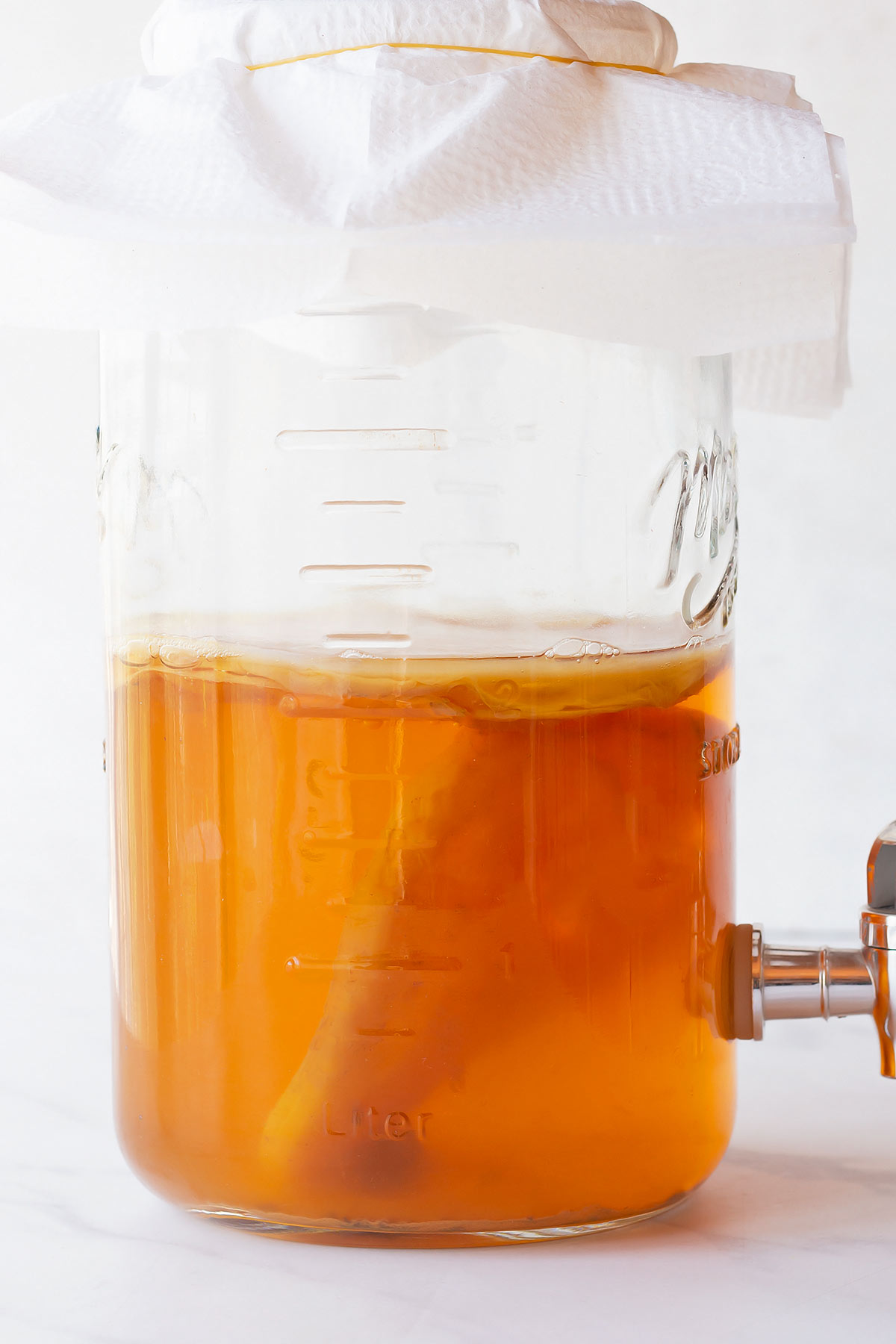
How to get a SCOBY for Kombucha?
You may be able to find scobies for sale in a starter kit when you want to make kombucha tea, especially at health or natural food stores or online. They come in some starter tea that you can use to start a batch of kombucha. Alternatively, you may have a friend or family member who brews kombucha on a regular basis and has extras to spare along with some starter tea.
When you make kombucha, a successful brew should form a new SCOBY on top which can be saved in a jar of strong kombucha for subsequent brews. As a result, someone you know who brews kombucha may have more scobies than they know what to do with.
If you don't have someone you can get a SCOBY and starter tea from, keep reading to learn how you can make one yourself so that you can get into making kombucha.
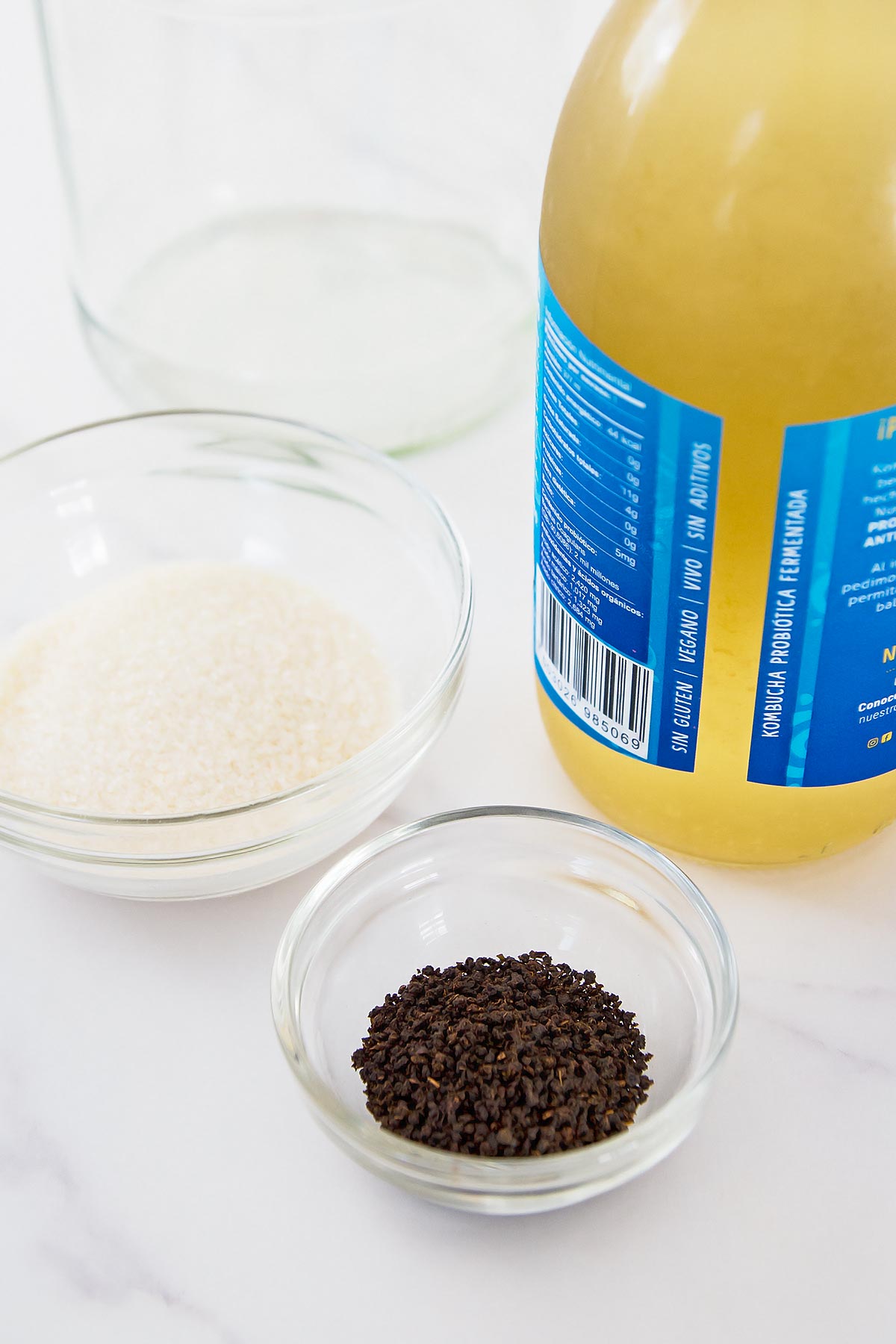
How to Make a SCOBY for Kombucha
To make a SCOBY so you can make kombucha, you start by mixing a ¼ cup of either granulated white sugar or cane sugar in a jar with 1 tablespoon of loose-leaf black tea in a large cup or jar. You will strain the mixture later on to remove the tea leaves.
Next, boil 2 cups of water. Then pour the hot water over the tea-sugar mix and stir until the sugar dissolves. This mixture should sit until cooled to produce a very strong tea. The caffeine is an important substance to feed the bacteria that will help form the SCOBY.
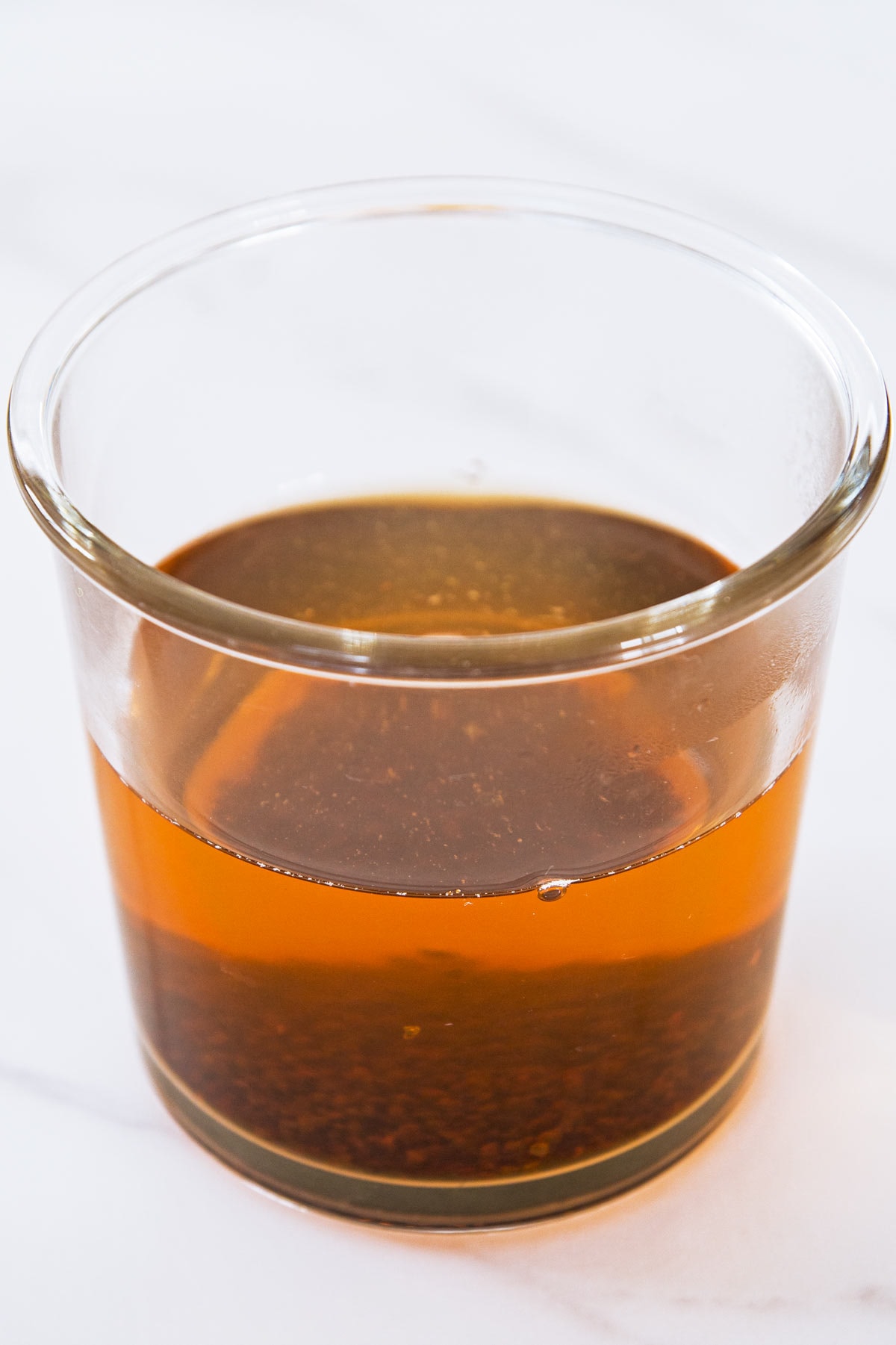
Then prepare a glass jar that you will use to grow your SCOBY by cleaning it very thoroughly. Afterward, top it with a small strainer lined with a cheesecloth or paper towel. Then, pour the cooled brewed tea over the strainer into the jar to remove the tea leaves.
At this point, add 1 cup of kombucha from a bottle of purchased kombucha. Avoid pasteurized kombucha as this won't contain live cultures.
It is ideal if the kombucha contains some of the yeast particles that typically form in kombucha and settle in the bottom of a bottle of kombucha. This tea will inoculate the tea with the bacteria and yeast necessary to form a SCOBY.
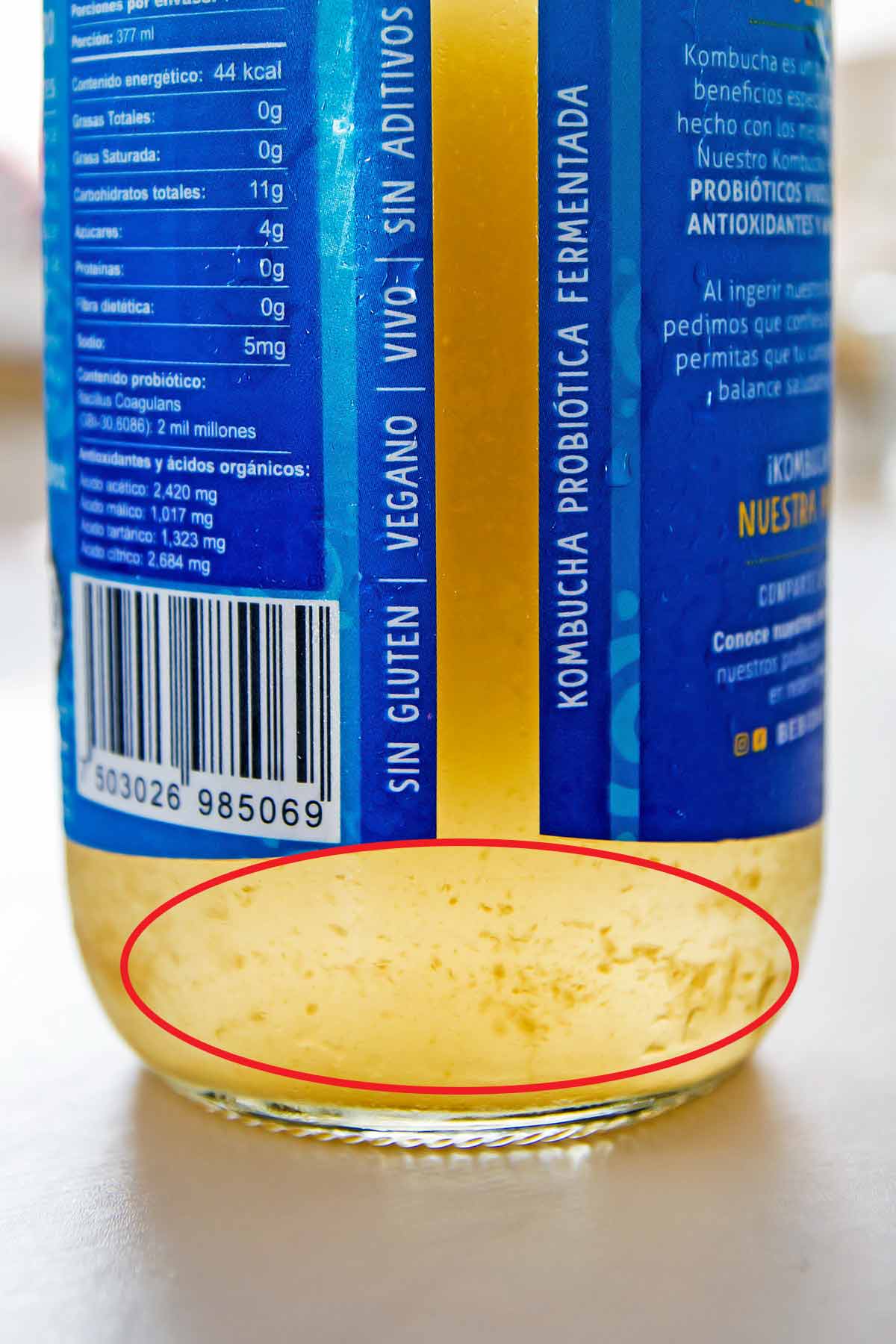
The next step is to cover the jar with a paper towel fastened with an elastic band and to allow it to sit at room temperature for 2 to 4 weeks in a cupboard or on a shelf out of direct sunlight. During this time, you should see a clear, jelly-like substance form on top of the brew while gradually solidifying and turning into a thick SCOBY.
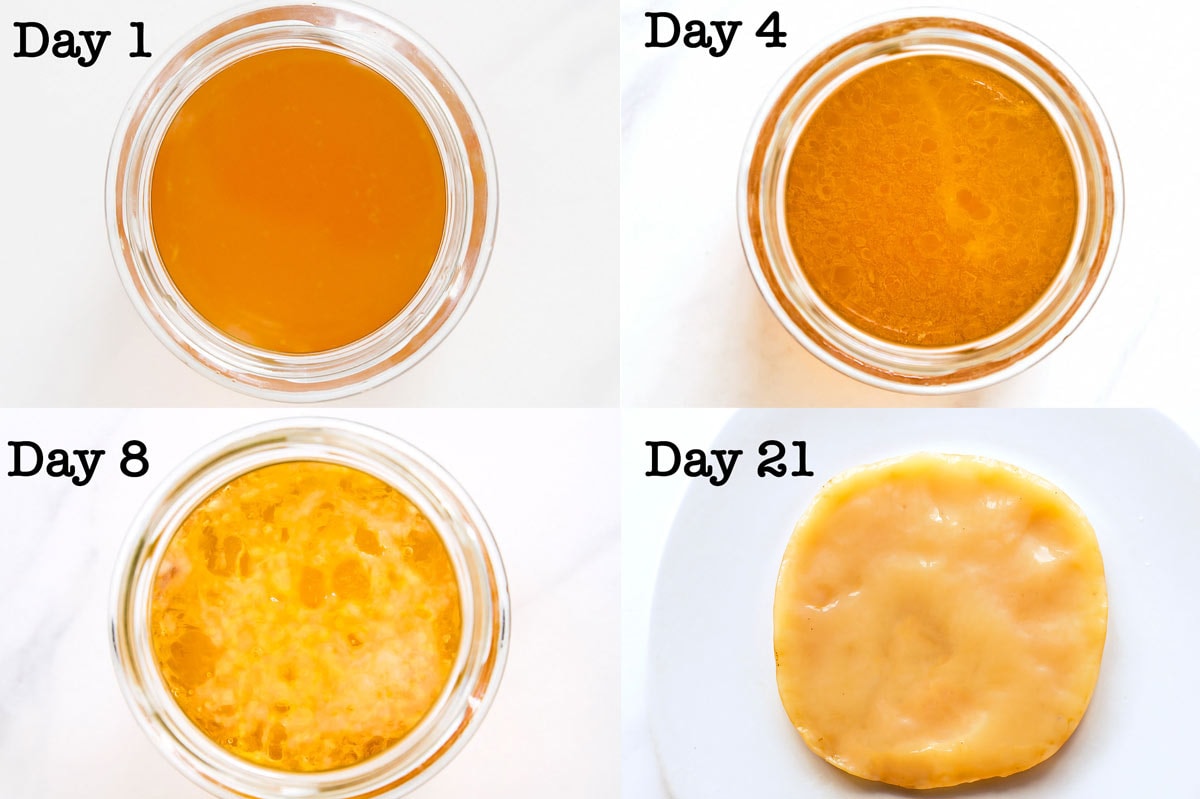
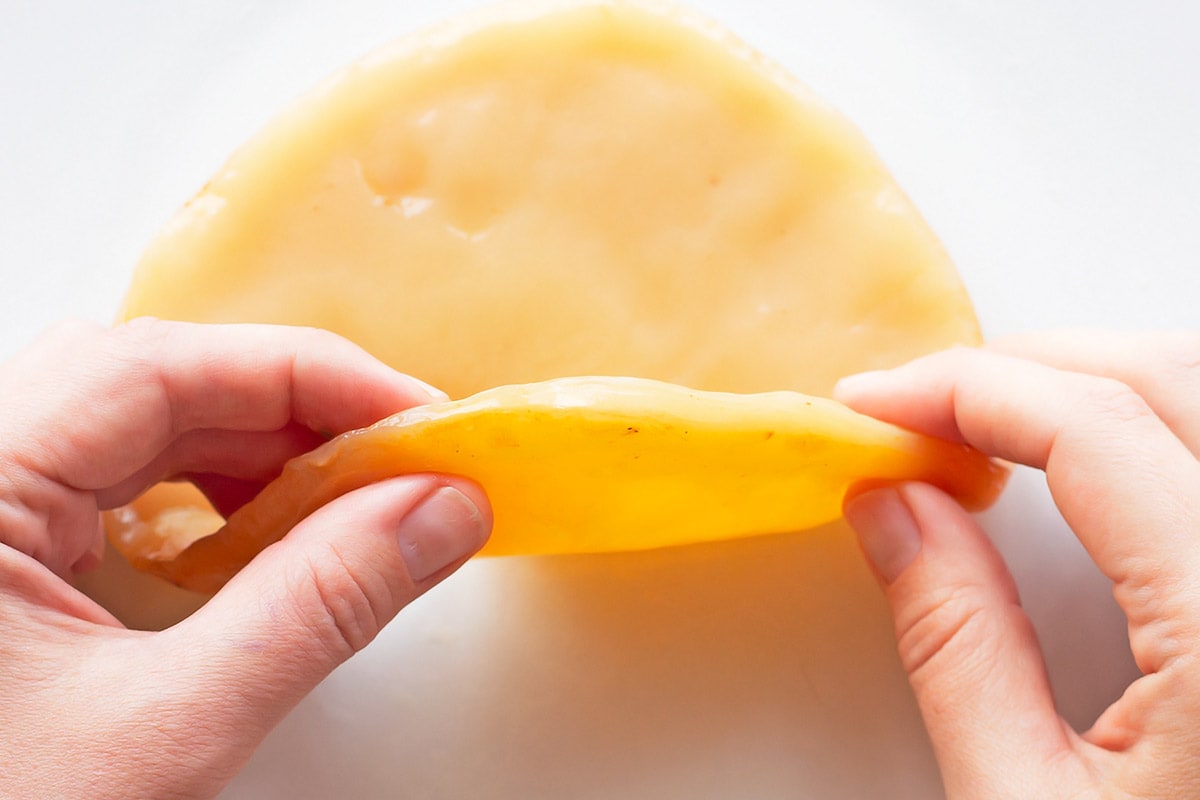
Once the SCOBY is at least ¼-inch thick, you will be able to use it to successfully make kombucha.
Maintaining the SCOBY (scoby hotel)
A SCOBY can be utilized for multiple brews of kombucha. As it is added to batches of sweet tea and allowed to feed on sugar and caffeine, it will grow in thickness. The bigger your scoby, the faster you will be able to brew a batch of kombucha. Once the fermentation process gets too fast or the scoby just takes up too much space, you will want to pair it down.
You can slice it in half horizontally to make two scobies. Or you can also peel it apart with your hands. As you garner multiple SCOBYs, either from dividing them or from new ones forming in your homemade kombucha, you may want somewhere to keep them. Many homebrewers will keep a SCOBY hotel on hand which is basically a large jar, which contains the extra scobies covered with strong brewed kombucha.
Over time, the kombucha should be refreshed in order to keep the scobies active. You can also add some sweet tea to the hotel to ensure the scobies remain viable. The brew in your SCOBY hotel will be excellent for adding to new batches of kombucha as well.
With a scoby hotel you always have extras to share with friends that are just starting out. Or to keep as a backup, in case something goes wrong during a kombucha brew and you need to toss the whole batch. This happened to me during a move, when the paper towel cover shifted. Some impurities must have gotten inside and started growing unsightly black mold. Especially during the summer, you may also encounter some relentless fruit flies that somehow make their way in past the cover. This is also a reason to toss the batch, scrub your container clean, and start fresh with backup from the scoby hotel.
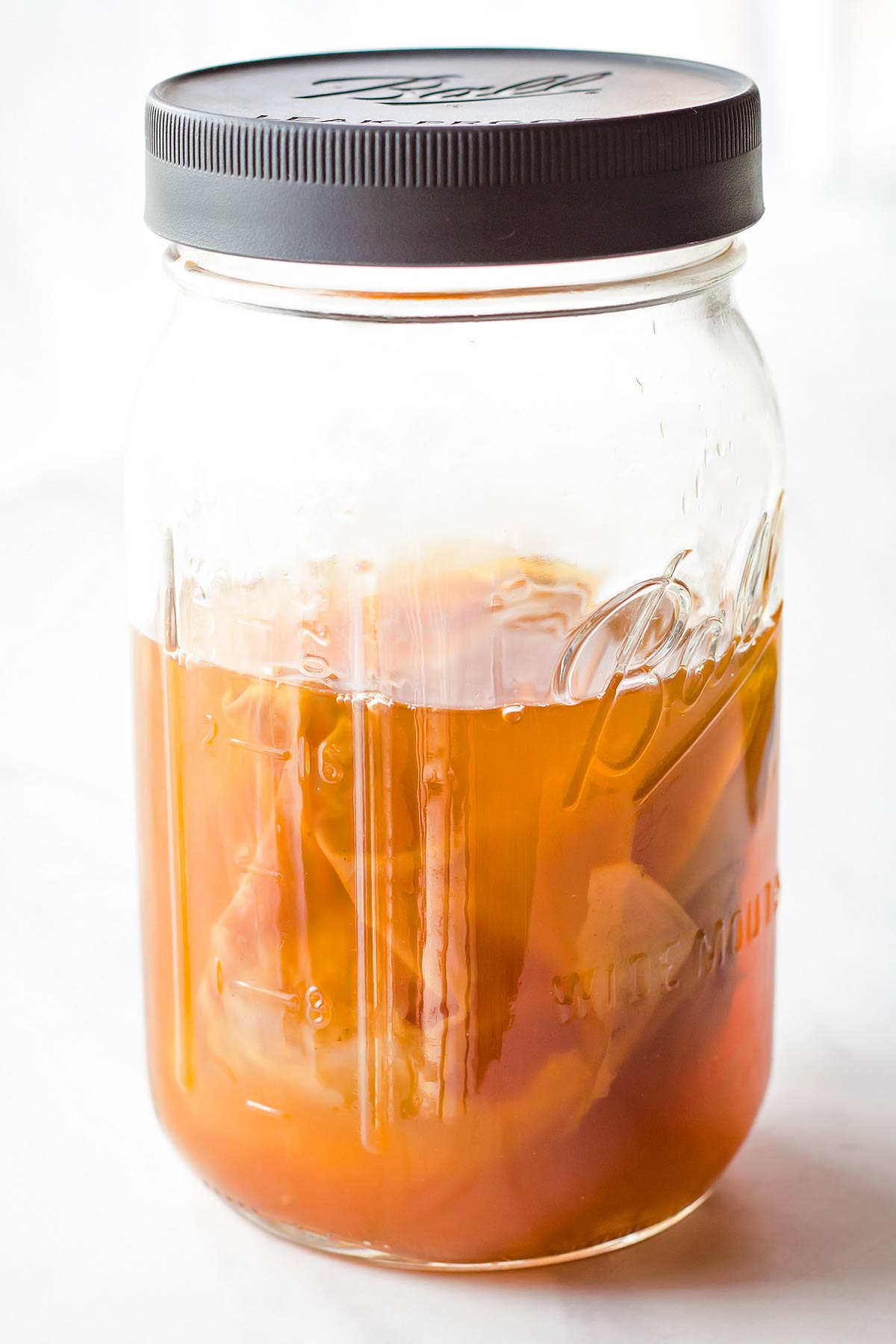
Once you have grown your scoby to at least ¼-inch thickness, you can use it to brew your first batch of kombucha.
Other Fermentation Recipes You'll Love:
- Rustic Sourdough Bread
- Sourdough Pancakes
- Sourdough Sandwich Bread
- Flavoring Kombucha with Second Fermentation
Recipe
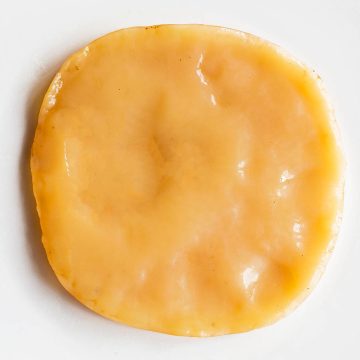
Scoby
Equipment
- wide jar that holds at least 4 cups
Ingredients
- 1 tablespoon loose leaf black tea or 3 teabags
- ¼ cup granulated sugar white or cane sugar
- 2 cups hot water
- 1 cup raw kombucha from the bottom of a bottle with 'floaties' (preferably unflavored)
Instructions
- Add ¼ cup sugar and 1 tablespoon loose leaf black tea to a large cup or jar.
- Pour in 2 cups of hot water and stir to dissolve the sugar.
- Let the mixture stand to brew into a strong black tea while it cools.
- Get the jar in which you are going to grow the scoby ready by cleaning it well.
- Line a small strainer with cheesecloth or paper towel and place it over the jar. Slowly pour the cooled strong tea into the jar while straining out the tea leaves.
- Stir in 1 cup of raw kombucha. You want some from the bottom of a bottle of store-bought kombucha with some of the 'fuzzies' that have settled there.
- Now cover the jar with a paper towel and secure it with a rubber band. Let the jar sit undisturbed in a cool, dry place in your kitchen for 2-4 weeks. A cupboard or pantry shelf works well.
- At first you will notice a small clear film forming over the top of the liquid. Over time this film will turn opaque and grow thicker into a jelly-like scoby.
- When your scoby is at least ¼ inch thick, you can use it to start brewing your own kombucha.
- The scoby will continuously keep growing while you use it for making kombucha. It will spread to fill out the surface of your kombucha brewing container. And it will also keep growing thicker with always new layers.
- The bigger the scoby, the faster the brewing process. So at some point you may want to start trimming down on your scoby, either by peeling off layers or even cutting it. You can share baby scoby with your friends who want to start making kombucha, or save them in a 'scoby hotel' in your pantry (just in case something ever goes wrong with your main scoby), or simply discard it.
Pin for later?

Random Questions
A Kombucha SCOBY is a jelly-like symbiotic culture of bacteria and yeast necessary for brewing kombucha. It's an acronym for a symbiotic culture that ferments sweet tea into kombucha.
While it's safe to eat, the texture might not be appealing. Its primary use is for fermenting sweet tea into kombucha.
Make a strong tea with sugar, add kombucha, and let it ferment in a jar covered with paper towel for 2-4 weeks until a thick SCOBY forms.
Yes, by using store-bought kombucha containing live cultures as a starter. The cultures will develop into a SCOBY during fermentation.
Yes, by combining strong tea, sugar, and store-bought kombucha in a jar covered with a paper towel. Over time, a SCOBY will form.
It takes 2-4 weeks for the clear, jelly-like substance to solidify into a thick SCOBY. The fermentation time may vary.


Wanda Chapman
When you refer to teabags, is that a small teabag or a family size teabag?
Jennifer @ Leelalicious
Hi Wanda! This recipe refers to single teabags.
Siobain
Hi,
Today is day 21 of making my first scoby. I followed your recipe and the scoby has been created but it is not 1/4 inch thick. I just touched for the first time with a spoon and although it is one piece it feels a little fragile and began to sink in the jar where before it had been floating on the top. Can I continue to leave the scoby to grow further in the same liquid and jar? Thank you
Regina | Leelalicious
Usually it would be fine to just keep it to grown longer, but because it sank to the bottom a new layer probably won't attach to the existing piece for a while. I would add another batch of strong sweet tea to this mixture. A new layer should form on top and probably after a while the existing one will start flowing up. It may connect to the new layer, or they may stay as separate layers.
Simone
Can you use a cider vinegar Scoby to make kombucha?
Jennifer @ Leelalicious
Hi Simone! I don't believe that a cider vinegar Scoby would have the correct types of bacteria and yeast to make authentic kombucha. I hope this helps but let us know if you have any other questions.
Misty
I have been wanting to start my own kombucha and making homemade scoby. You mentioned using a "scoby hotel" but there wasn't any links or anything else regarding this hotel. Can you please give me more information? My husband and I both love and drink kombucha daily. We want to have a few going at a time and stagerated them. Thank you in advance for your time.
Jennifer @ Leelalicious
Hi Misty! There is nothing like homemade kombucha. A scoby hotel simply refers to a separate vessel (usually something similar to your brewing vessel) that you can store your scobies when they aren't in use. I have another gallon-sized glass brewing vessel that I use for this but you might be able to use a large jar if your scobies fit.
To begin making your scoby hotel, simply make sure your brewing vessel is nice a clean, add the scobies, and top it with 2 to 4 cups of previously brewed mature kombucha. Then, top it with some sweet tea which will give the scobies some fuel to keep them healthy as they rest. Then, you can cover the top with a cloth as you would with kombucha you are brewing and let it sit at room temperature until you are ready to use the scobies again.
A scoby hotel will require some maintenance. Sometimes the scobies will grow quite thick, so you might want to trim them to ensure that oxygen can move through the vessel to the lower layers. Every month or so, it is a good idea to top the vessel up with fresh sweet tea to ensure the scobies have continuous food as well.
I use "The Big Book of Kombucha" by Hannah Crum and Alex LaGory as my guide. It is a wonderful book that can give you more details about brewing kombucha and creating and maintaining your scoby hotel.
Merike Talv
Hi! Can I use combucha vinegar (raw) for making scoby?
Regina | Leelalicious
Hi Merike. I am not familiar with kombucha vinegar. I imagine it similar to over fermented kombucha. In that case, yes that will be perfect to growing your own scoby.